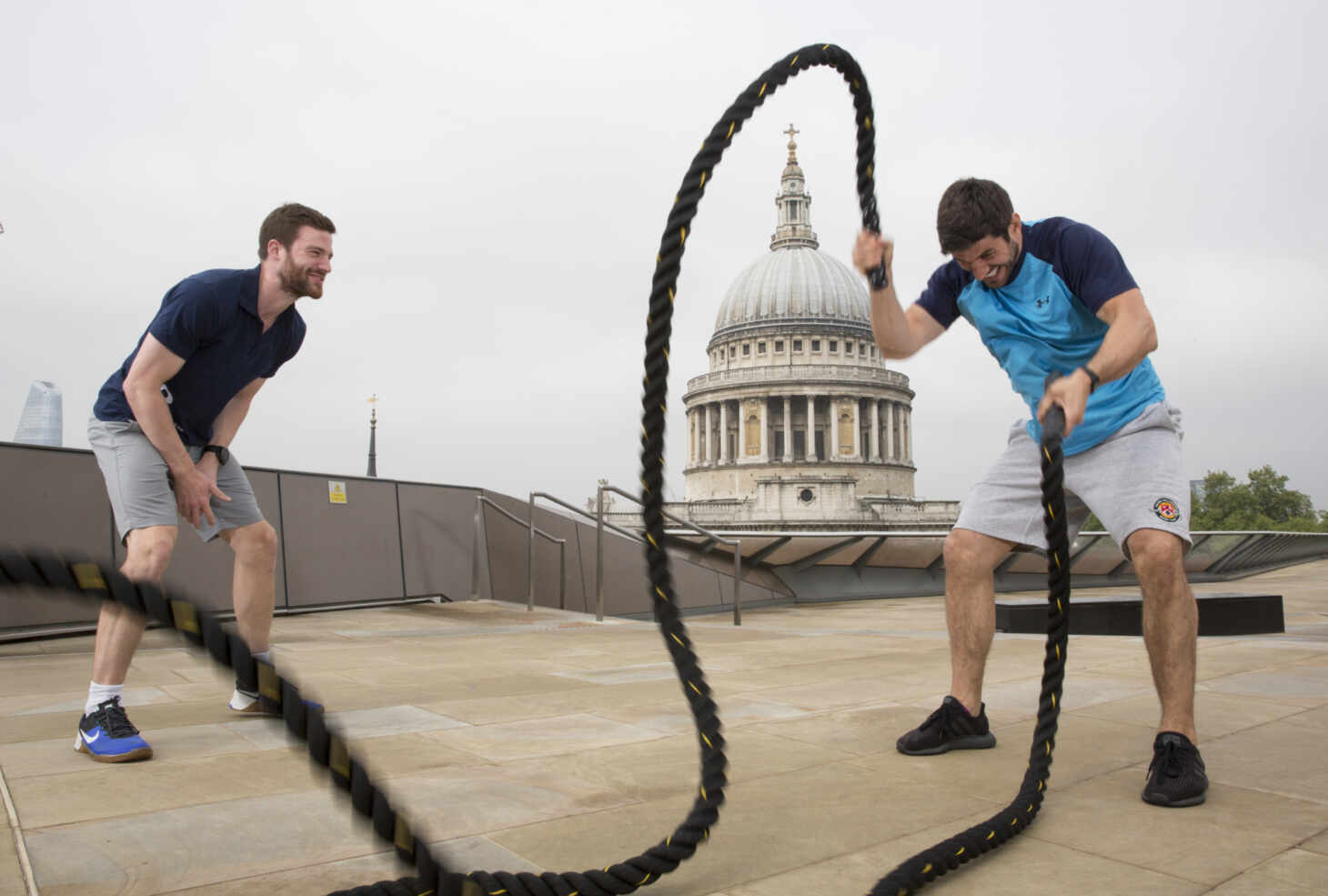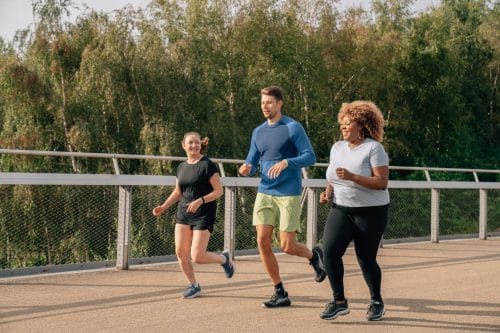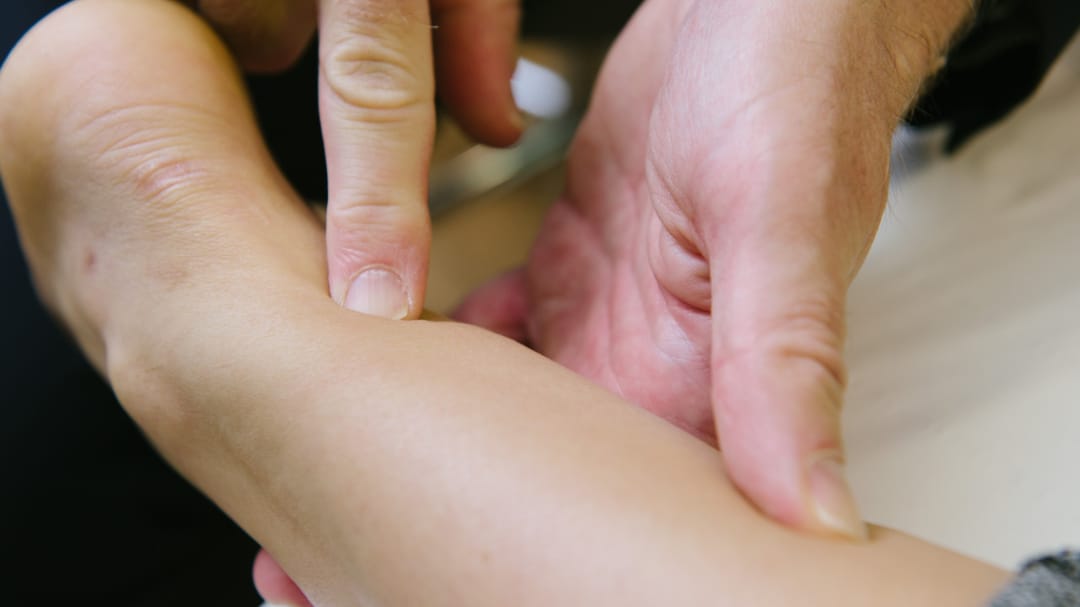Three Breathing Techniques to Improve Your Workout

Pure Sports Medicine
- 21 September, 2018
- Exercise
- 3 min read
It’s something we do roughly 20,000 times a day since the day we were born, but how you breathe can have a big impact on the quality of your athletic performance, blood pressure, stress levels and the amount of weight you can push, pull or squat.

Four common mistakes that lead to ‘Inefficient breathing’:
1) Chest Breathing
This involves breathing through the top of your chest rather than deeply through the belly using the diaphragm. When we take a deep breath in the diaphragm contracts and moves downwards. This opens up more space in the chest cavity allowing our lungs to expand. When we breathe out the diaphragm relaxes and moves upwards into the chest cavity. The intercostal muscles within the ribs relax causing the chest cavity to shrink, forcing carbon dioxide to leave the lungs. When we chest breathe, we force the body to rely on other accessory muscles (like those in the neck) not built for the job. This also weakens the diaphragm and a weak diaphragm will fatigue easily during exercise meaning your muscles won’t receive optimum blood flow.
2) Shallow Breathing
When we shallow breathe, we are working too hard to get the oxygen we need. Rather than taking deep, full breaths, we resort to shallow fast ones, forcing the body to work overtime to get the same amount of O2. This could be attributed to something as simple as poor posture – slumping in front of a computer screen at work or gym buffs working on their pecs all day can be prone to this. In a hunched over posture, we lose part of our ability to expand the diaphragm and take in the big, full breaths that can boost our workout performance, increase efficiency and help manage stress.
3) Lack of Rhythm
No not on the dance floor, breathing smoothly and rhythmically can play a calming role. If breathing is erratic it’s hard to get into the zone.
4) Breath Holding
Don’t do it. When you hold your breath, the energy in your cells plunges and you feel fatigued during your workout before you should.

Breathing Techniques to Increase Performance
Strength training for respiratory muscles and breathing control techniques can lead to improved performance in endurance, high-intensity sports and strength training, so not only should you ditch the cigarettes, correct bad posture and keep asthma and allergens in check follow the tips below to get the gains you want!
1) Deep Belly Breathing
Lying on the ground with your feet on a chair or up against the wall helps to eliminate the effect of gravity, making it easier to recruit your diaphragm – alternatively, if you want to do this at work and not get odd looks you can do this standing or in your chair. Put one hand on your chest and the other on your abdominal area, for 1-2 minutes take deep breaths, focusing on trying to make your abdomen rise before your chest and spending as much time on exhalation as inhalation.
2) The Warm-Up
– A warm up is the perfect time to refocus the priority on your breathing. Take some time stretching and foam rolling your upper body, particularly the chest, shoulders and neck. Then go through deep breathing exercises as explained above prior to your active warm up. By focussing on your breath prior to exercising, you reinforce proper breathing mechanics before any heavy lifting or HIIT starts. The result is less blowing once the exertion starts leading to a more efficient workout.
3) When You’re Working Out
Pace, cadence and form are all important in running but without the right breathing strategy your run might just end up being much shorter than you want. Some experts advise the 2:2 rhythm (breath in for 2 steps, breath out for 2 steps), others say take a long breath and take 3-4 steps for both inhale/exhale – synchronising the breath to running cadence can help the organs from putting unnecessary pressure on the diaphragm. The nose vs mouth debate will continue to run on, evidence into this is unfortunately poor. Breathing through the mouth may be the route of less resistance but breathing through the nose has its own benefits – helping to warm the air before it enters the lungs (great for cold weather training). Main take home message – test it out, see what feels right for you and your lungs!
We’ll be following this blog with a series of videos on our social media to show what the common mistakes look like and how to retrain that breathing control with some quick and simple deep breathing exercises.

Advice
Over the last 20+ years our experts have helped more than 100,000 patients, but we don’t stop there. We also like to share our knowledge and insight to help people lead healthier lives, and here you will find our extensive library of advice on a variety of topics to help you do the same.
OUR ADVICE HUBS See all Advice Hubs

